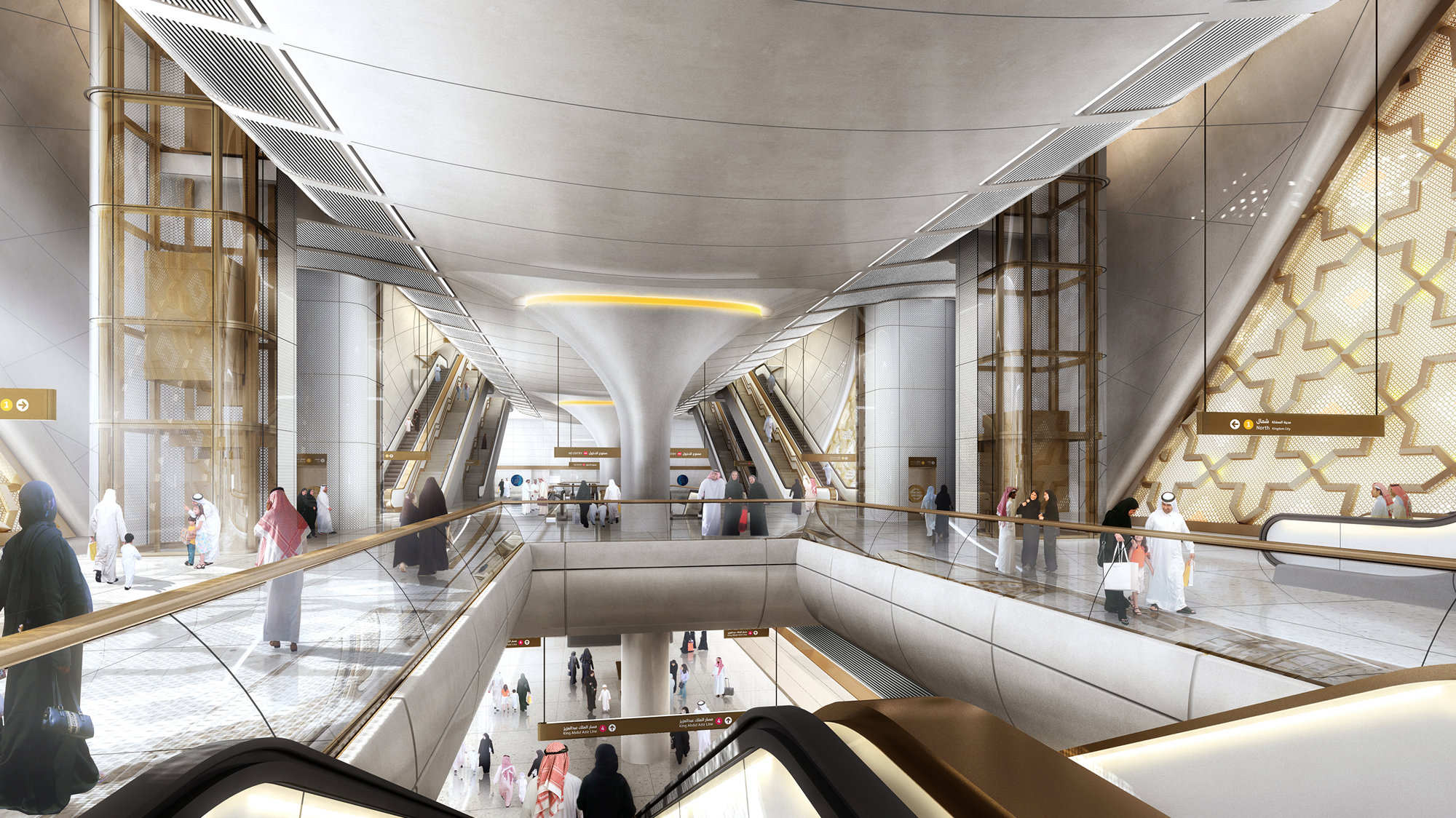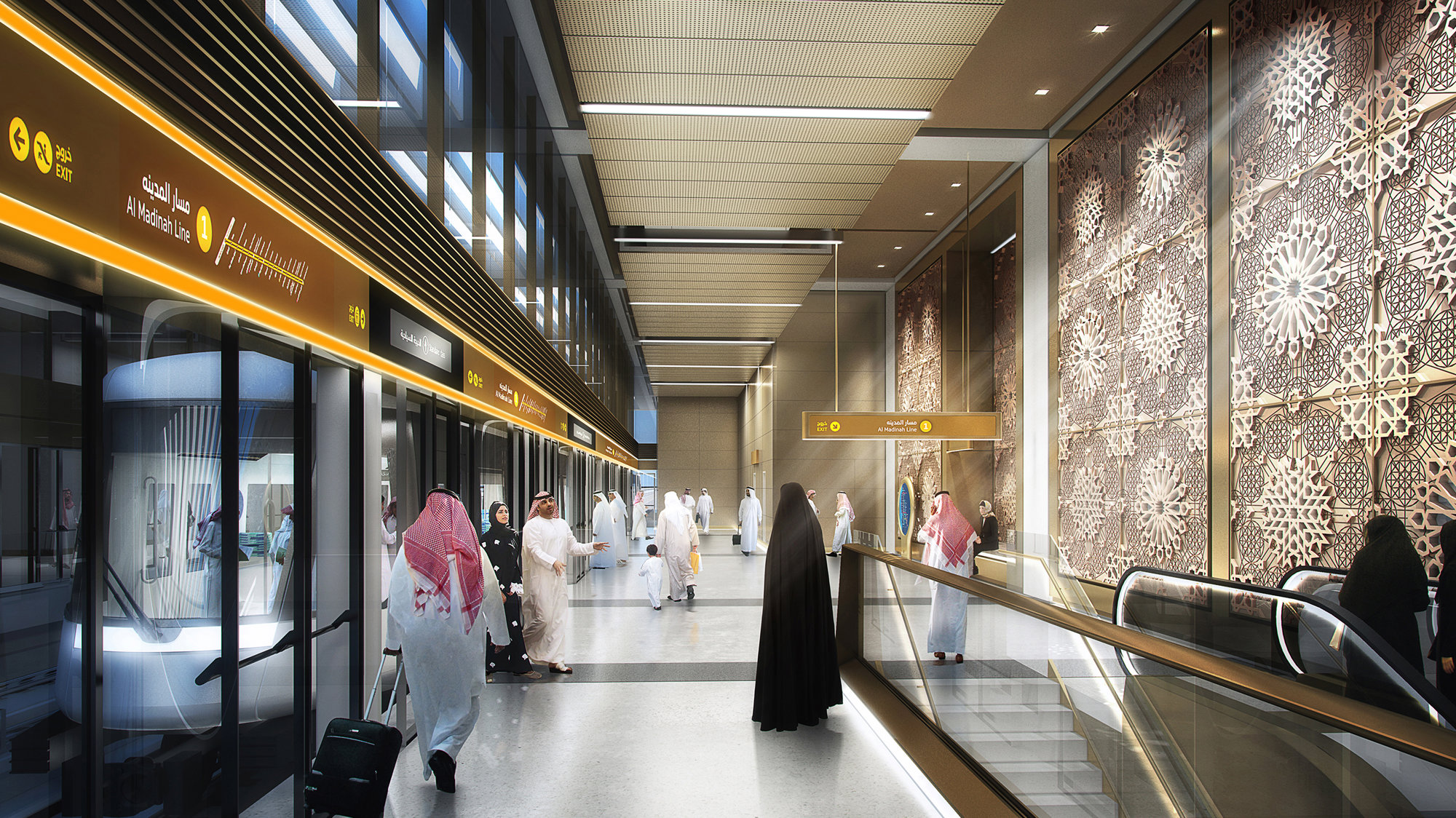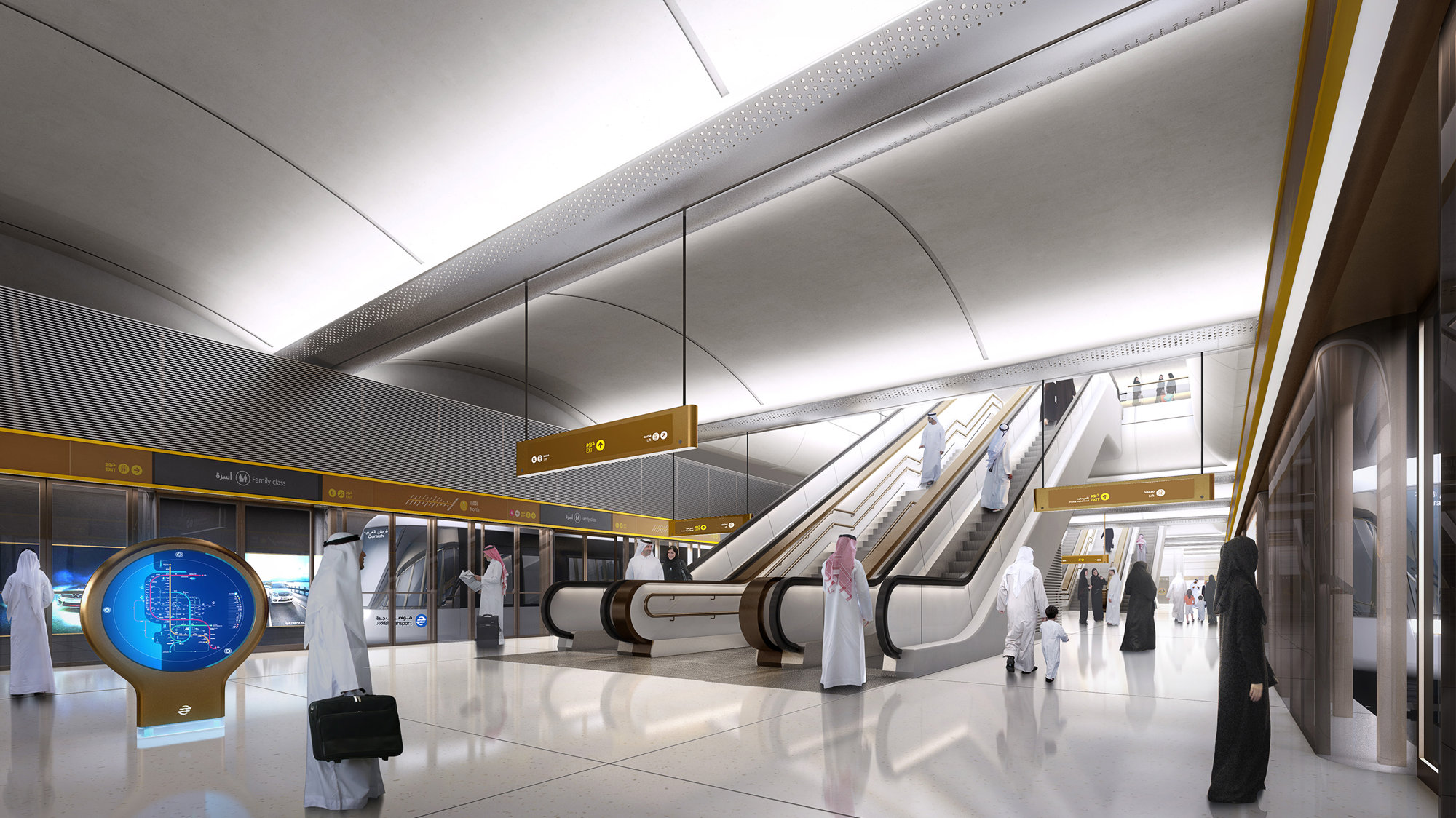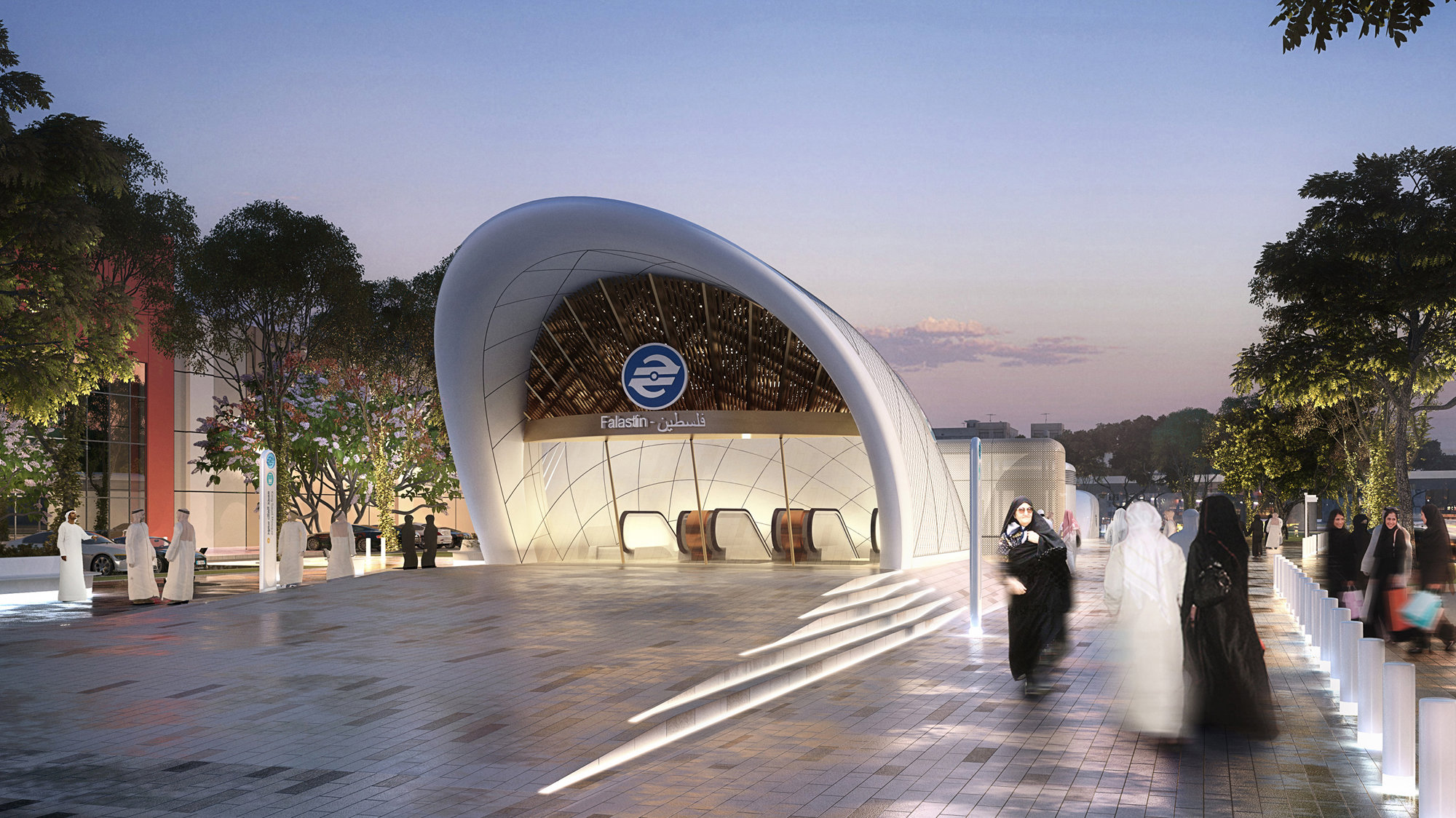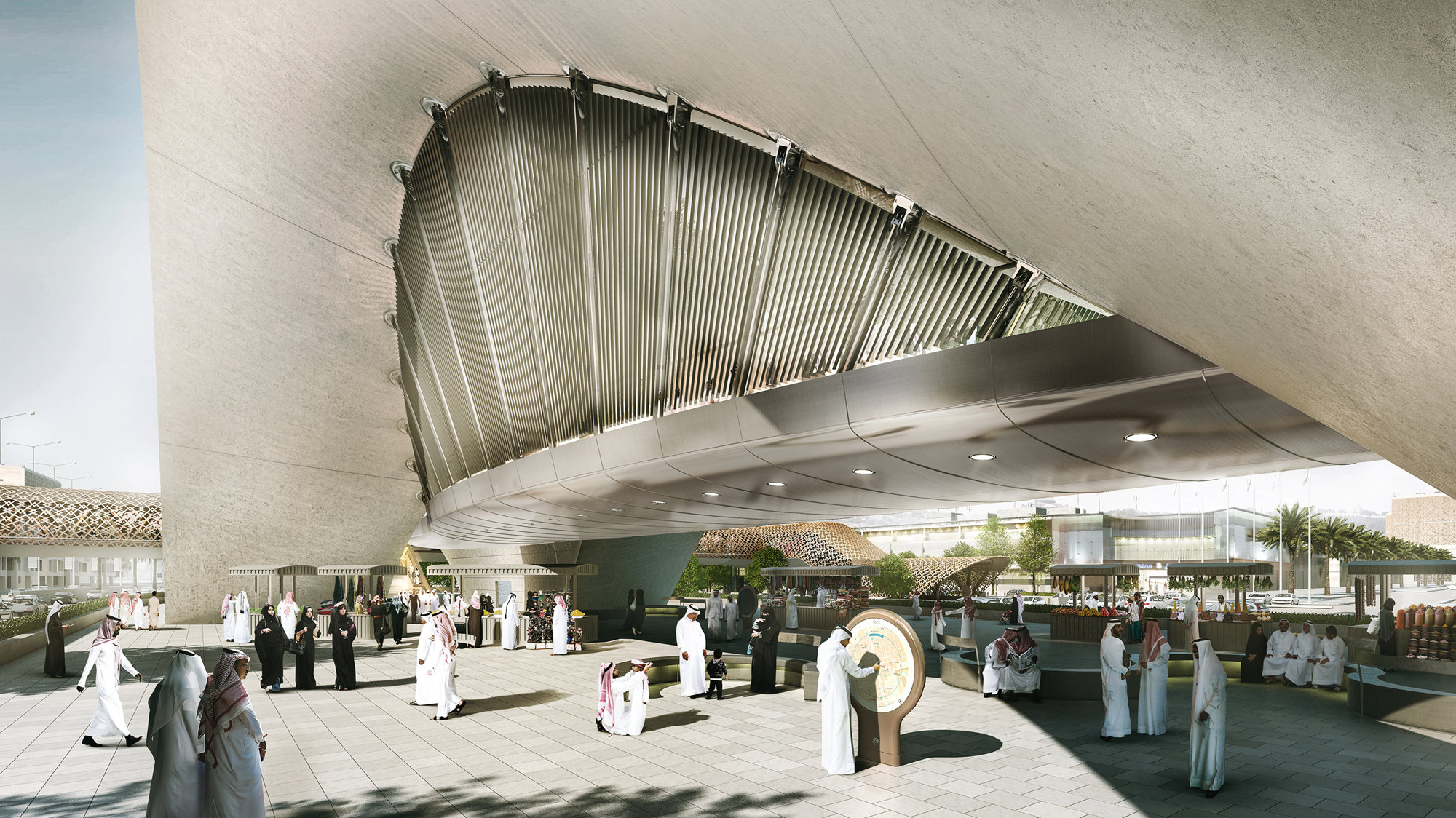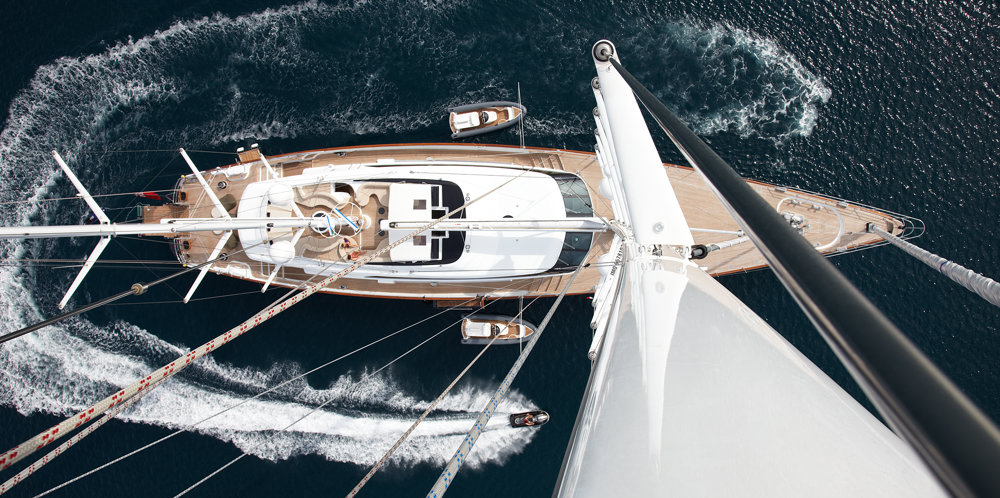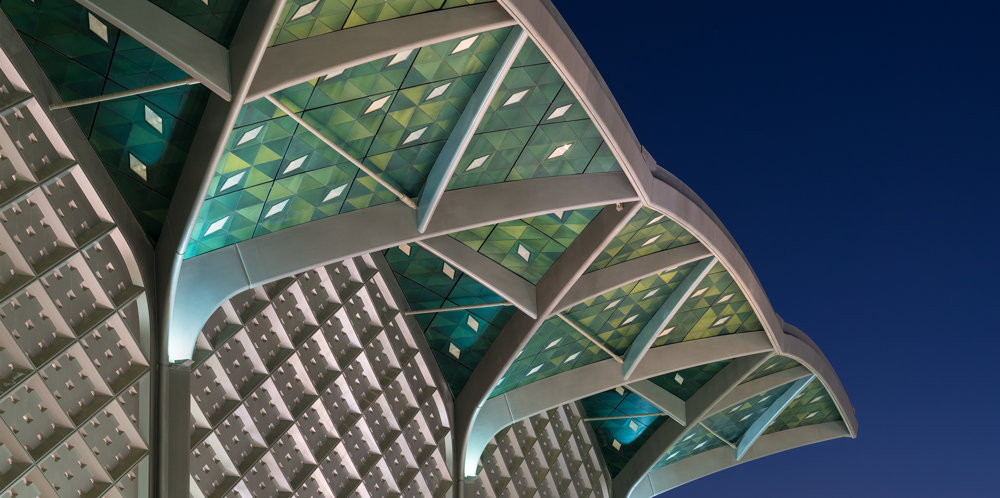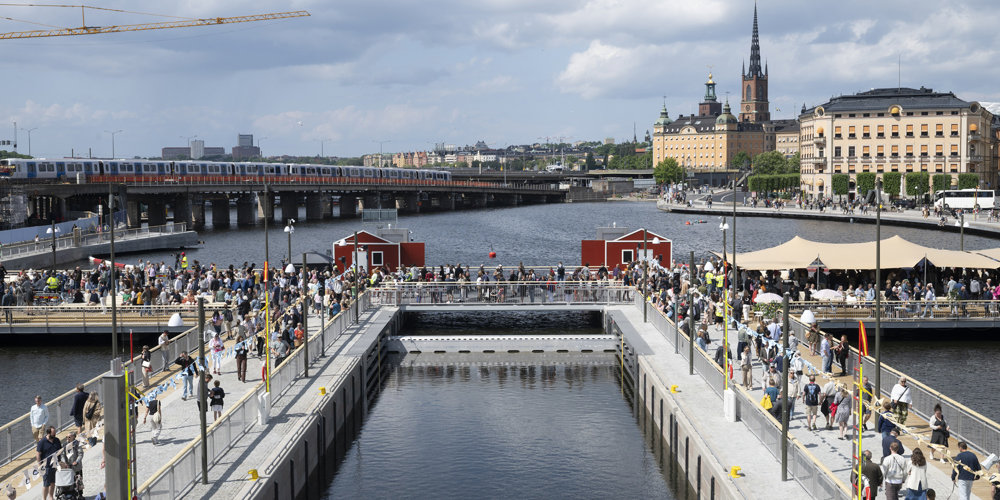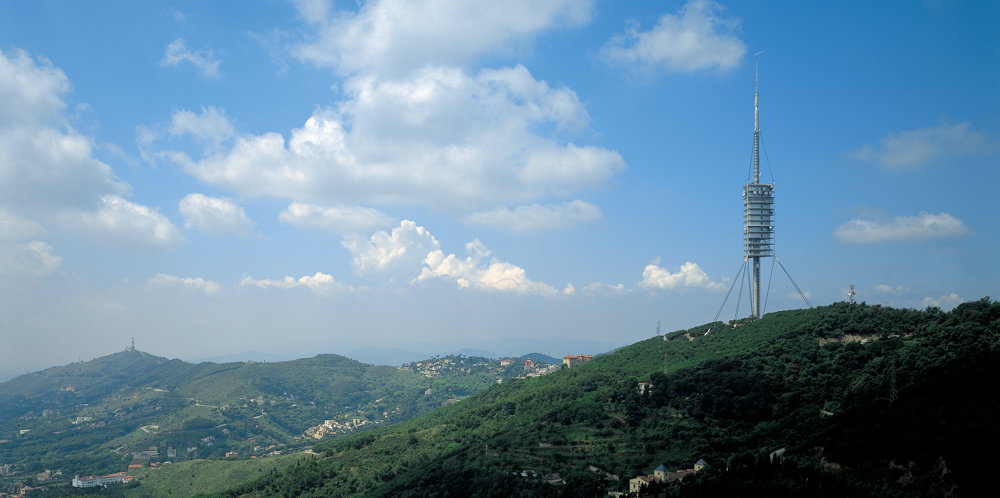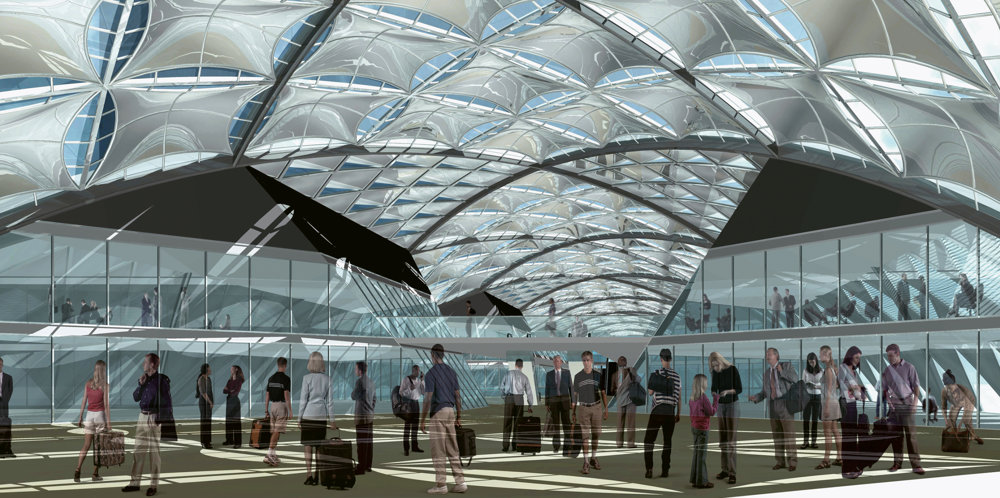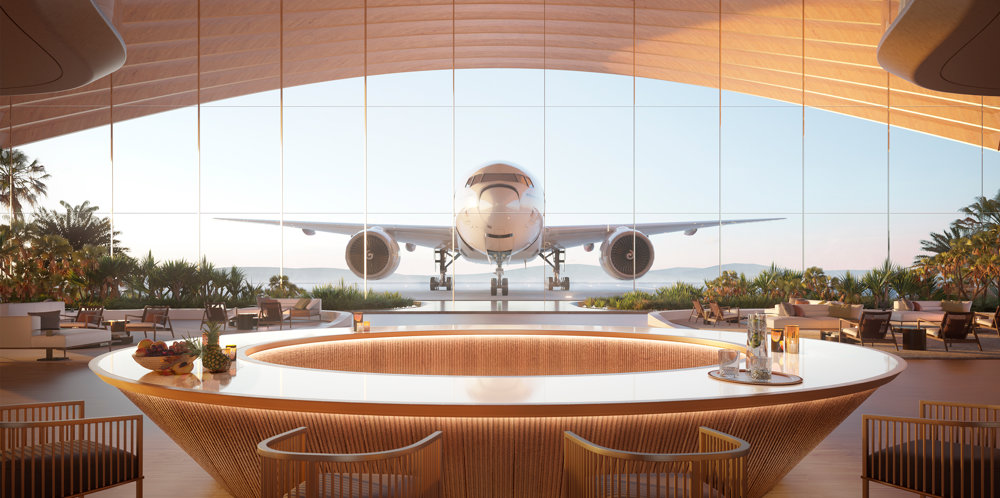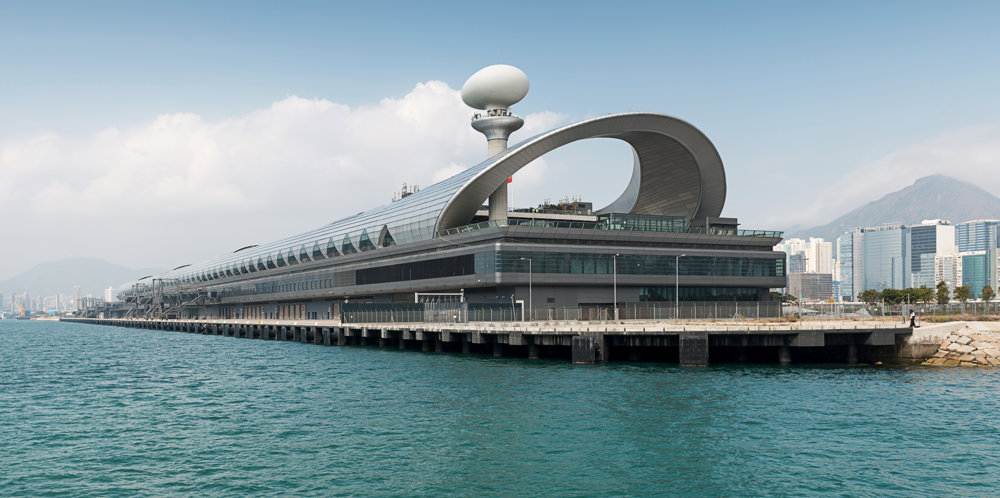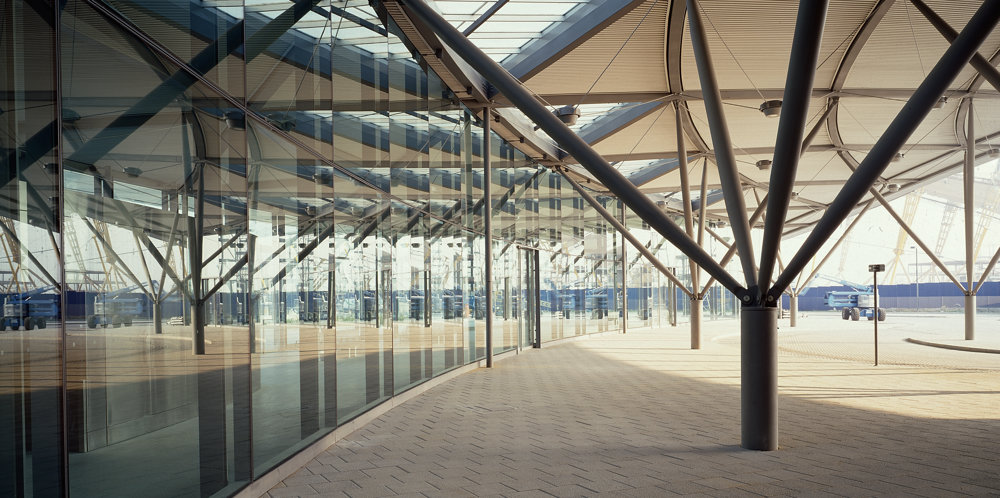Jeddah Metro is an integrated urban masterplan for the 23rd century that outlines a completely unified design vision of the city’s transport system, incorporating a long-term strategy that will act as a catalyst for urban growth, setting in place the foundations for a sustainable future for Jeddah. Inspired by the city’s vision for infrastructure development, the proposal is a joint venture with engineers Arcadis, and takes a holistic approach towards different modes of transport, public spaces, energy and communication infrastructure, and landscaping, ensuring each of these aspects forms a coherent and complementary whole.
Designed in response to the local climate, the masterplan is city-wide and draws on the high-density, compact urban model of the ancient quarter of Al Balad, with its mixture of uses and comfortable, walkable shaded streets. Currently only a small percentage of the population live within a 10-minute walk of Jeddah’s transport nodes – the project aims to achieve a significantly larger percentage, through a process of densification and strategic planning. Each station node will create a new neighbourhood, with a unique character, and together these will create a diverse and vibrant city. The metro network is defined by a series of viaducts – a distinct, sculptural presence that marches through Jeddah, providing space for multiple functions and catalysts for positive urban growth and a natural orientation to the city.
Working with Space Syntax, the practice has conducted extensive urban analysis to create better pedestrian connections throughout the new masterplan. The stations are therefore designed as efficient intermodal hubs, allowing passengers to transfer easily between different modes of transport, from high-speed rail, metro, bus and tram to water taxi and a network of shaded cycle routes and pedestrian walkways. Architecturally, the challenge was to create a coherent identity for the whole metro system, while expressing the individual character of each site. The distinctive white concrete arches tie the entire network together visually, while providing a flexible, modular unit for development and expansion. Each station also has shading screens contained within these arches, designed in collaboration with Saudi artists Ahmed Angawi and Dana Awartani, which express the local character – both materially and aesthetically.
With the project set on a fast-track schedule from the outset, the local Foster + Partners project team was collocated within the client’s office in Jeddah. Daily meetings facilitated quick decision making, and ensured all stakeholders were kept abreast of the latest design decisions. The comprehensive plan therefore extends from the design of the stations to the rolling stock, using the latest technology and materials to create distinctive streamlined forms. The emblematic design of the viaduct and sleek chrome nose of the train are echoed in the branding concept by Brand Union, creating an instantly recognisable image for the new transportation plan, while expressing a unique sense of place.









